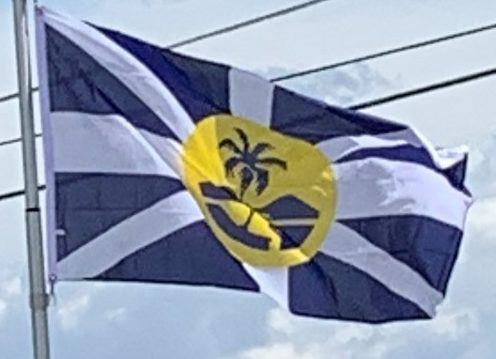
The island was subsequently visited by many government and whaling ships sailing between New South Wales and Norfolk Island and across the Pacific, including many from the American whaling fleet, so its reputation as a provisioning port preceded settlement, some ships leaving goats and pigs on the island as food for future visitors. Between July and October 1791 the Third Fleet ships arrived at Sydney and within days the deck work was being reconstructed for a future in the lucrative whaling industry. Whale oil was to become Australia’s most profitable export until the 1830s, and it was the whaling industry that shaped Lord Howe Island’s early history.
1834–1841: Settlement:
Permanent settlement on Lord Howe was established in June 1834 when the British whaling barque Caroline, sailing from New Zealand and commanded by Captain John Blinkenthorpe, landed at what is now known as Blinky Beach. They left three men, George Ashdown, James Bishop and Chapman, who were employed by a Sydney whaling firm to establish a supply station. The men were initially to provide meat by fishing and by raising pigs and goats from feral stock. They landed with (or acquired from a visiting ship) their Māori wives and two Māori boys. Huts were built in an area now known as Old Settlement which had a supply of fresh water, and a garden was established west of Blinky Beach.

This was a cashless society; the settlers bartered their stores of water, wood, vegetables, meat, fish and bird feathers for clothes, tea, sugar, tools, tobacco and other commodities not available on the island—but it was the whalers’ valuation that had to be accepted. These first settlers eventually left the island when they were bought out for £350 in September 1841 by businessmen Owen Poole and Richard Dawson (later joined by John Foulis) whose employees and others then settled on the island.
1842–1860: Trading Provisions:
The new business was advertised and ships trading between Sydney and the New Hebrides (Vanuatu) would also put into the island. Rover’s Bride, a small cutter, became the first regular trading vessel. Between 1839 and 1859 between five and twelve ships made landfall each year, occasionally closer to 20 with seven or eight at a time laying off the reef. In 1842 and 1844 the first children were born on the island. Then in 1847 Poole, Dawson and Foulis, bitter at failing to obtain a land lease from the New South Wales Government, abandoned the settlement although three of their employees remained.
In 1849 there were just 11 people living on the island but it was not long before the island farms expanded. Vegetable crops now included potatoes, carrots, maize, pumpkin, taro, watermelon—even grapes, passion fruit and coffee. Between 1851 and 1853 there were several aborted proposals by the NSW Government to establish a penal settlement on the island.

In about 1853 a further three settlers arrived on the American whaling barque Belle. As well as George Campbell (who died in 1856) and Jack Brian (who left the island in 1854), the third, Nathan Thompson, brought three women (called Botanga, Bogoroo and a girl named Bogue) from the Gilbert Islands. When his first wife Botanga died he then married Bogue. Thompson was the first resident to build a substantial house in the 1860s from mainland cedar washed up on the beach. Most of the residents with island ancestors have blood relations or are connected by marriage to Thompson and his second wife Bogue.
